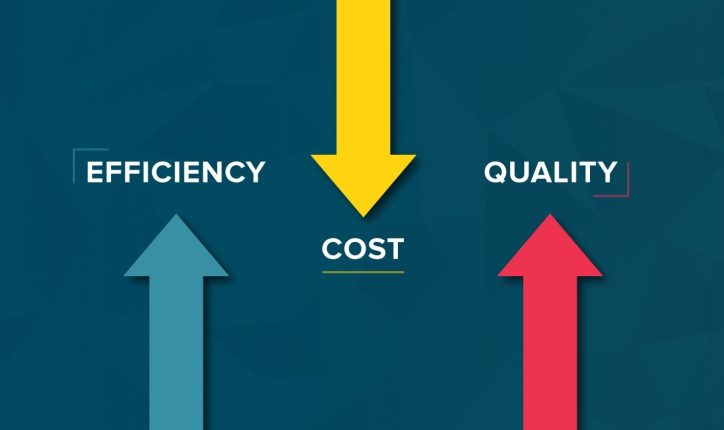Need Assistance? Call one of our experts today on: 0844 980 2218 - Email: enquiries@hflbuildingsolutions.co.uk
Need Assistance? Call one of our experts today on: 0844 980 2218 - Email: enquiries@hflbuildingsolutions.co.uk
Home/How Proactive Water Maintenanc...

715 Views
0 Comments
22 May 2025
In today’s challenging economic landscape, every business is looking for smarter ways to cut costs without compromising safety, compliance or operational quality. One area often overlooked is water maintenance. While many businesses only react when issues arise (such as a broken boiler, a Legionella outbreak or a sudden spike in water bills) proactive water maintenance offers a long-term, cost-saving solution that also supports regulatory compliance and system efficiency.
This article breaks down exactly how proactive water maintenance reduces long-term costs and why it’s a smart investment for any facility manager or business owner.
Proactive water maintenance involves regularly monitoring, inspecting and servicing your water systems to prevent problems before they occur. This includes:
Rather than waiting for faults, proactive maintenance is about staying ahead, reducing risks, avoiding emergencies and keeping your systems running efficiently.
Emergency repairs can be one of the most expensive aspects of facilities management. When a system breaks down unexpectedly (whether it’s a boiler, cooling tower or a closed-loop water system) the cost of emergency call-outs, replacement parts and temporary closures can be enormous.
Common emergency repair costs include:
By identifying and fixing issues during routine checks (such as a slow build-up of limescale in pipes or minor temperature inconsistencies) these major breakdowns can be completely avoided.
Cost-saving example: Descaling a water heater during a scheduled visit may cost a few hundred pounds. Replacing it after it fails could cost thousands and interrupt business for days.
Water systems such as; boilers, calorifiers, pumps and pipework, are long-term investments. But without maintenance, they won’t reach their intended lifespan. Scale buildup, corrosion, and microbial growth silently damage these systems over time, reducing their efficiency and structural integrity.
Proactive maintenance removes harmful build-ups and keeps conditions stable, allowing equipment to function at peak efficiency and last years longer than poorly maintained systems.
Think long-term: A £10,000 boiler might last 15 years with proper care, but only 7 to 10 years if neglected. That’s a 50% increase in capital expenditure for avoidable reasons.
A lesser-known benefit of regular water system maintenance is improved energy efficiency. Many water systems (especially those for heating and cooling) rely on optimal water flow and temperature to work efficiently.
When scale builds up in pipes or heat exchangers, the system must work harder (and use more energy) to heat or cool the water. Even a thin layer of scale can increase energy consumption by 10–15%.
Regular descaling, flushing, and filter changes ensure:
Over time, these small savings accumulate into thousands of pounds in reduced energy bills annually.
Neglecting water hygiene can lead to serious legal consequences. For example, if Legionella bacteria is found in your system and you haven’t followed proper water safety protocols, the Health and Safety Executive (HSE) can issue fines or even criminal charges. In the past decade, UK businesses have faced millions in fines due to Legionella outbreaks, many of which were preventable.
Regular water testing, flushing, and record-keeping not only ensure compliance with regulations like HSE’s ACOP L8 and COSHH—they also protect your business from financial and reputational damage.
Smart risk management: A Legionella risk assessment every two years (or annually in high-risk sites) costs far less than legal representation or a site closure after an outbreak.
Insurers are increasingly attentive to water safety and maintenance, especially in buildings with complex water systems or high occupancy. Poor maintenance increases risk, and higher risk means higher premiums. Worse still, if a claim is made but you don’t have maintenance records or a Legionella control scheme in place, you may not be covered at all.
Proactive maintenance helps you:
Unplanned outages don’t just cost money, they also affect productivity and customer satisfaction. In sectors like hospitality, healthcare, and manufacturing, even short water system failures can cause cancellations, lost sales or reputational damage.
Routine maintenance can be scheduled during low-usage hours or quiet periods, making the process predictable and non-disruptive. You avoid downtime, unhappy clients and frantic last-minute fixes.
If you want to switch from a reactive to a proactive maintenance strategy, here are five steps to get started:
While it may seem like a small line item on the budget, water maintenance is a powerful tool for reducing long-term costs. From energy savings and equipment longevity to regulatory compliance and risk management, the benefits far outweigh the initial effort.
By adopting a proactive maintenance mindset, you not only protect your people and assets, you also unlock serious financial advantages that grow year after year.
Freeman House, Orbital 24, Oldham Street, Denton, Manchester M34 3SU
Hi I'm HFL BOT! Type "Hello'' to get started


